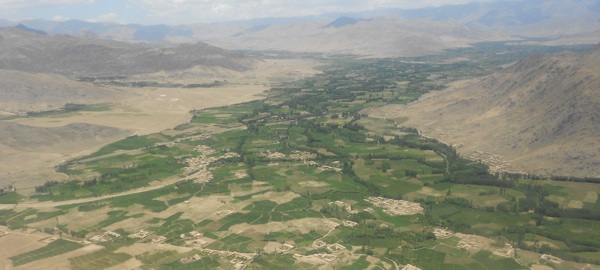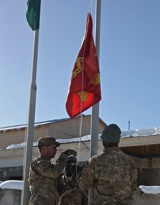Special Report from Afghanistan – A Turning Tide?

The Pashtun ethnic group is the largest ethnic group in Afghanistan and the population currently beset by the Taliban insurgency. It is also widely considered the world’s largest tribal ethnic group. Yet, Pashtun tribal leadership has been decimated by three decades of war, destroying any sense of solidarity or cohesion beyond the village level.
In the absence of a broader unifying identity, many Pashtuns have turned to the Taliban insurgency. Others, however, have turned to their tamim, the factions with whom they fought during the Soviet-Afghan war or the subsequent Afghan civil war. Among the largest of these is the Hezb-e-Islami (literally "Party of Islam").
{default}This tamim‘s leader, Gulbuddin Hekmatyar, is among the most colorful characters in recent Afghan history. During the Soviet-Afghan War, he was a mujahidin leader. During the Afghan civil war, he briefly served twice as prime minister of Afghanistan.
His first term was cut short by Ahmed Shah Massoud’s tamim, Jamiat-i-Islami ("Society of Islam") in 1992; his second term was ended by the Taliban in 1996. Hekmatyar spent the next five years in Iran before returning in 2001 to revive the Hezb-i-Islami and begin an insurgency against the US-led coalition.
 In the decade since he launched this insurgency, however, Hezb-i-Islami has increasingly found itself in a three-way war with coalition forces, Afghan security forces, and the Taliban. In 2010 and 2011, the tamim reached an accord with the Karzai government that brought it into the political mainstream, including several provincial governorships in eastern Afghanistan. As its position has continued to worsen relative to the Taliban, Hezb-i-Islami has also reached out to coalition forces.
In the decade since he launched this insurgency, however, Hezb-i-Islami has increasingly found itself in a three-way war with coalition forces, Afghan security forces, and the Taliban. In 2010 and 2011, the tamim reached an accord with the Karzai government that brought it into the political mainstream, including several provincial governorships in eastern Afghanistan. As its position has continued to worsen relative to the Taliban, Hezb-i-Islami has also reached out to coalition forces.
Enter Task Force Gunner (4th Battalion, 1st Field Artillery), which arrived in the Nerkh Valley, in Wardak Province of eastern Afghanistan, in February of this year. The Gunners arrived in Nerkh just as Hezb-i-Islami’s decade-long battle with the Taliban over the lucrative Nerkh Valley apple orchards was taking a decisive turn for the worse. The tamim enjoys broad-based support from former Hezb-i-Islami mujahidin in Nerkh district, but it was driven out of western Nerkh by Pakistan-armed and funded Taliban fighters. When Hezb-i-Islami leaders made overtures for peace with the coalition, the Gunner’s commander, Lt.Col. Don Paquin, seized the opportunity.
In Nerkh, as in the rugged northeastern reaches of Kunar and Nuristan and the arid plains of northeast Ghazni, Hezb-i-Islami is walking a precarious tightrope, declaring opposition to the Taliban where it has worn out its welcome, ambivalence to an Afghan government with tentative public support, and public hostility but private détente with coalition forces. If they can bring along those Afghans loyal to Hezb-i-Islami through thirty years of association with their tamim, this might just be the beginning of a turning tide in the decade long war in Afghanistan.
Click here to see all the articles that have been published in this series of reports from Afghanistan.
The views expressed in this article are those of the author and do not reflect the official policy or position of the Department of Defense or the US Government.
About the Author
Lt. Col. Pat Proctor is currently deployed to eastern Afghanistan, serving as the chief of plans for the 1st Infantry Division. He is a veteran of both the Iraq and Afghan wars and the author of Task Force Patriot and the End of Combat Operations in Iraq. He is also a doctoral candidate in history at Kansas State University.

